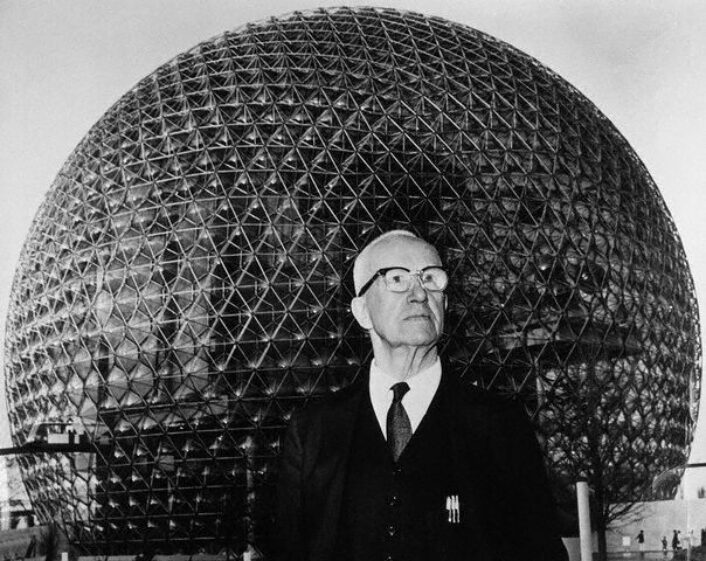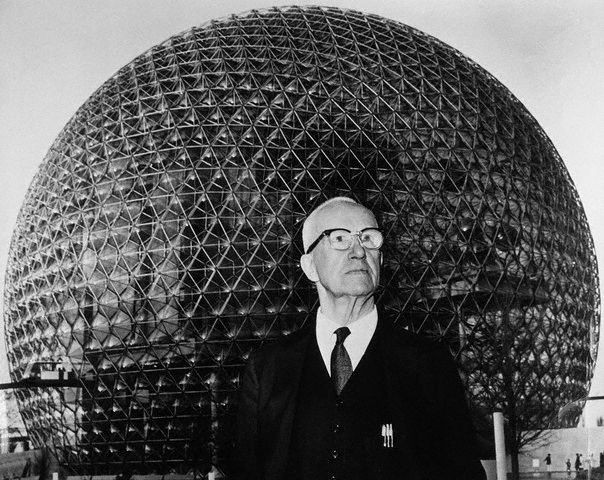
Buckminster Fuller popularized the Geodesic Dome.
Image courtesy of Play the City.
A Geodesic Dome is a spherical structure based upon a network of great circles, or “geodesics” as termed by Buckminster Fuller, on its surface that intersect and form rigid triangular elements. There are several advantages to the Geodesic Dome: they’re easy to build, they’re very strong for their weight, and efficient: Geodesic Domes maximize the interior volume while minimizing the exterior surface area.
The first “Geodesic” Dome was built post World War I, in 1926, by German engineer Walther Bauersfeld to house a new planetarium projector. It would be 20 years before R. Buckminster Fuller would promote and popularize his Geodesic Domes as a result of experiments with artist Kenneth Snelson at Black Mountain College in 1948 and 1949, resulting in his U.S. patent in June 1954.
The domes have been appropriated since for many purposes, most famously for housing, but also for such uses as adventure trekking and special events. Recently, the Oakland, CA based studio Bold Machines, in collaboration with Emerging Objects, built ‘Star Lounge’. Star Lounge is a Geodesic Dome composed of 2,073 individual 3-D printed parts. It is the largest structure to date made out of 3-D printed parts, measuring 8’5” tall and 12’ wide, and was conceived to demonstrate the architectural potential of 3-D printing.
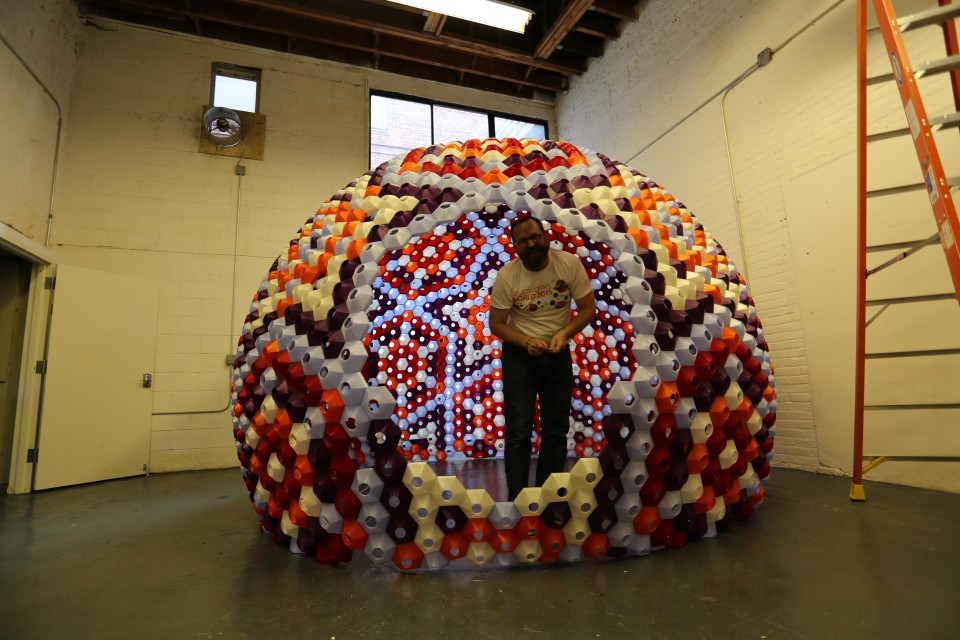
Bold Machines General Manager Robert Steiner inside ‘Star Lounge’.
Image courtesy of 3D Print.com

A view from inside ‘Star Lounge’.
Image courtesy of 3D Print.com
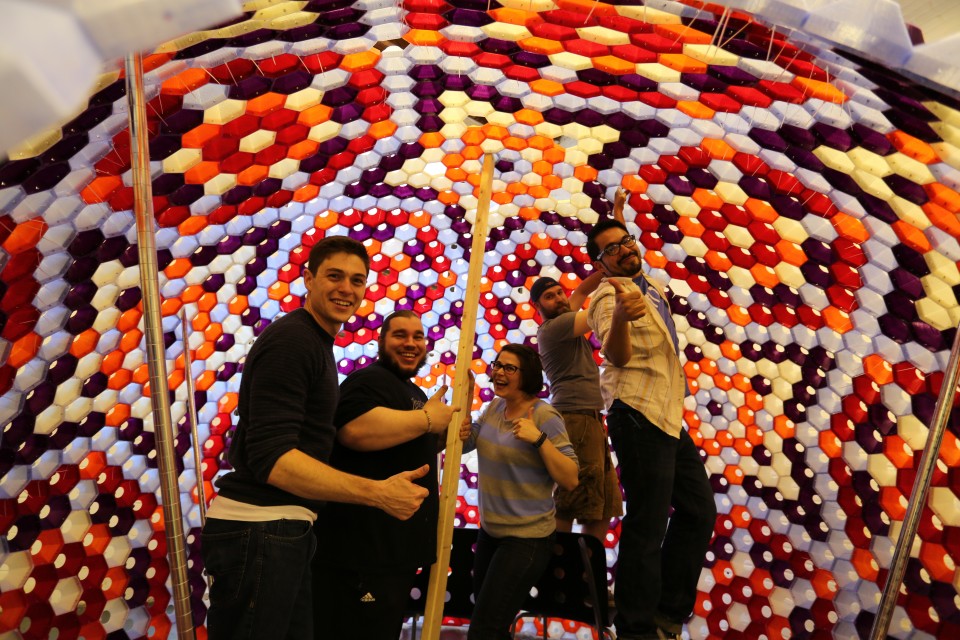
‘Star Lounge’ under construction.
Image courtesy of 3D Print.com
Another great example: In San Francisco, Geodesic Domes were recently proposed as a solution to homelessness. A Better SF teamed up with Downtown Streets Team and Byrens Kim Design to plan the “Community Transition Center” project. The Center would consist of a “Welcome Dome”, a “Kitchen Dome”, a “Laundry Dome”, a “Computer Room Dome” and 100 “Personal Domes.” The budget for the entire Center would be $200,000 with each Personal Dome costing $599. The Center is designed to be set up or taken down quickly, in as little as 30 days, so it could temporarily fill vacant lots. Each resident would either pay $250 rent a month or work on community service projects.

An overview of the Community Transition Center.
Image courtesy of Twitter
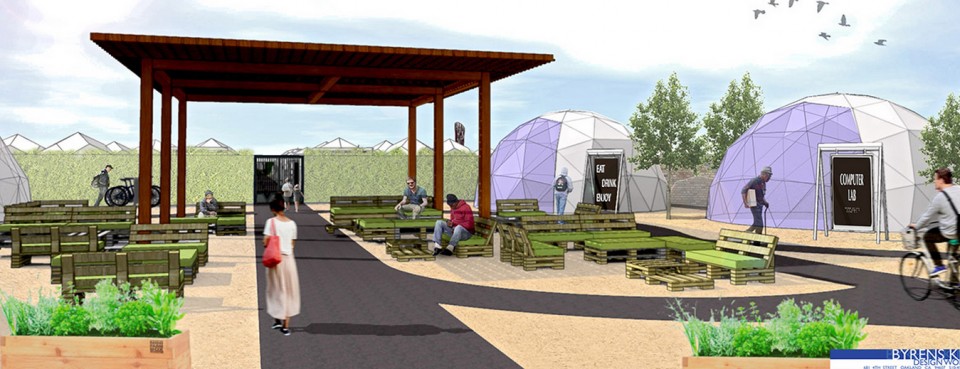
A rendering of the Community Transition Center.
Image courtesy of Transition Centers.org
